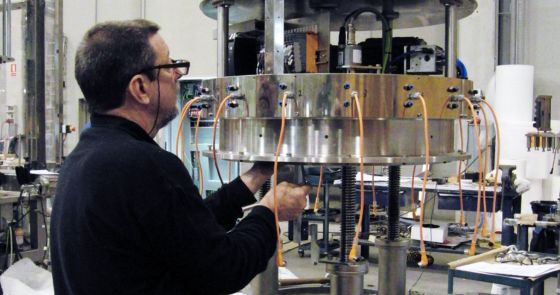Handling corrosive liquids in filling machinery can pose significant challenges for manufacturers. The properties of corrosive liquids, such as their pH level, chemical composition, and concentration, can impact equipment performance and personnel safety. Understanding these properties is critical in selecting appropriate filling machinery. This article will provide an overview of how to handle corrosive liquids in filling lines.
Selecting the Right Materials for your Filling Machinery
One of the most critical factors in handling corrosive liquids is selecting the right materials for the equipment. The materials used in the filling machinery should be resistant to the corrosive properties of the liquid. For example, stainless steel is an excellent material for handling corrosive liquids such as acids. It is resistant to corrosion, and it is also easy to clean and maintain.
It is also important to consider the type of sealing material used in the filling line. Sealing materials for instance Viton Extreme or Kalrez, which is resistant to many corrosive liquids. It is important to ensure that the sealing material used is compatible with the liquid being filled.
Proper Maintenance of your Filling Machinery
Proper maintenance is crucial for the longevity of equipment when handling corrosive liquids. The equipment should be inspected regularly to ensure that there is no damage caused by the corrosive liquid. Any damage should be repaired immediately to prevent further deterioration. It is also important to clean the equipment regularly to remove any residue from the corrosive liquid. This will prevent the build-up of deposits that can cause damage to the equipment.

Handling Procedures when handling Corrosive Liquids
Handling corrosive liquids requires specific procedures to ensure the safety of personnel and the equipment. The following are some of the handling procedures that should be observed:
- Personal Protective Equipment (PPE): all personnel handling corrosive liquids should wear the appropriate PPE. This includes gloves, goggles, and protective clothing.
- Containment: corrosive liquids should be contained in appropriate containers that are resistant to the liquid’s corrosive properties. Any spills should be cleaned up immediately to prevent damage to personnel and the equipment.
- Ventilation: adequate ventilation should be provided in the filling area to prevent the build-up of fumes that can be harmful to personnel.
- Training: personnel should be trained on the handling procedures for the specific corrosive liquid being filled. This includes proper handling, spill response, and emergency procedures.
- Emergency Procedures: emergency procedures should be in place in case of spills or leaks. These procedures should include evacuation protocols and spill response procedures.
Testing and Quality Control of the Filling Machinery
Testing and quality control are essential in ensuring that the filling machinery is functioning correctly when handling corrosive liquids. Regular testing of the equipment should be performed to ensure that it is functioning correctly. This includes testing the valves, pumps, and other equipment for leaks and damage.
In addition, quality control measures should be in place to ensure that the filled product meets the required specifications. This includes monitoring the pH level, viscosity, and other properties of the liquid being filled.
In conclusion, handling corrosive liquids in filling lines requires careful consideration and manufacturers must prioritize personnel safety and equipment longevity by selecting appropriate materials, implementing proper maintenance procedures, and following handling protocols. Regular testing and quality control measures are also essential to ensure that the filled product meets the necessary specifications. Overall, handling corrosive liquids in filling lines is a complex process that requires specialized knowledge and expertise.